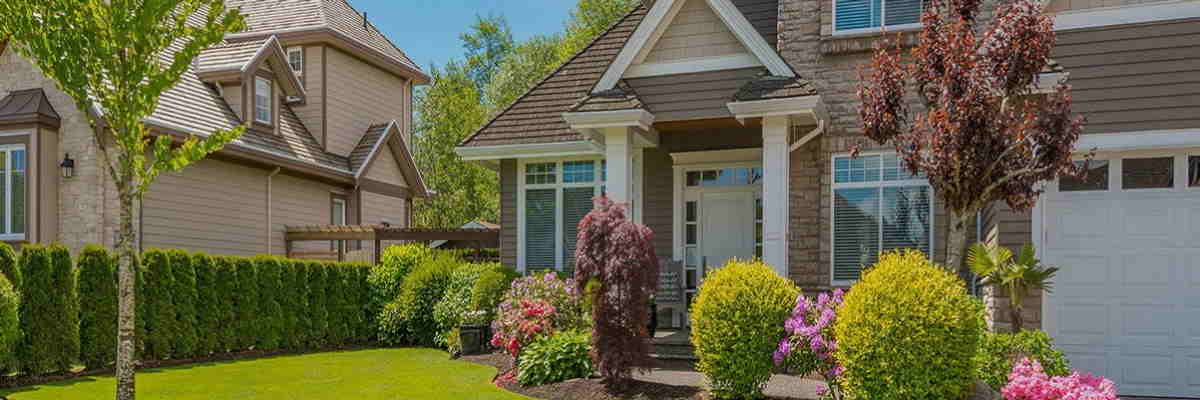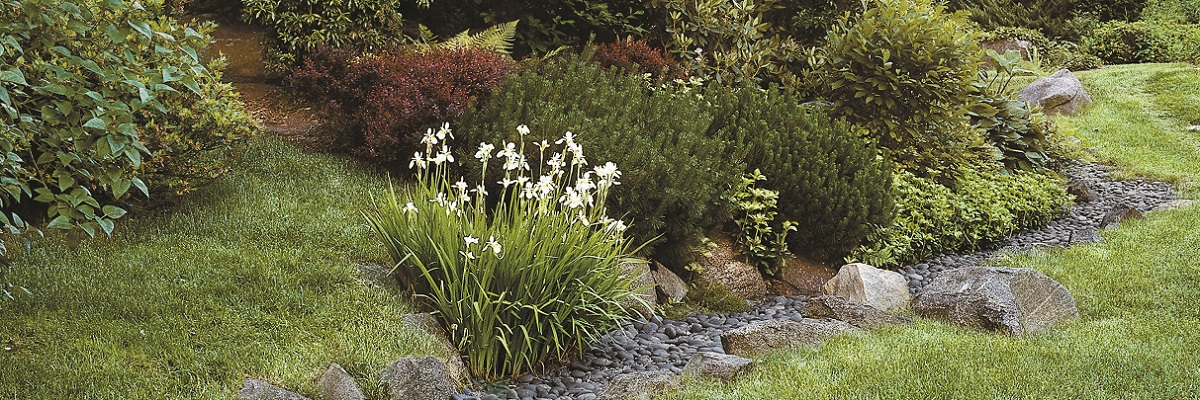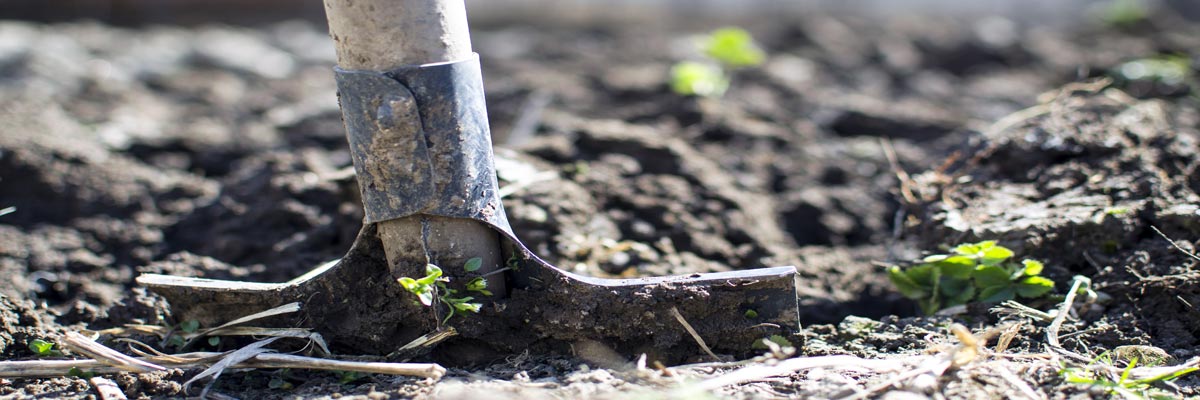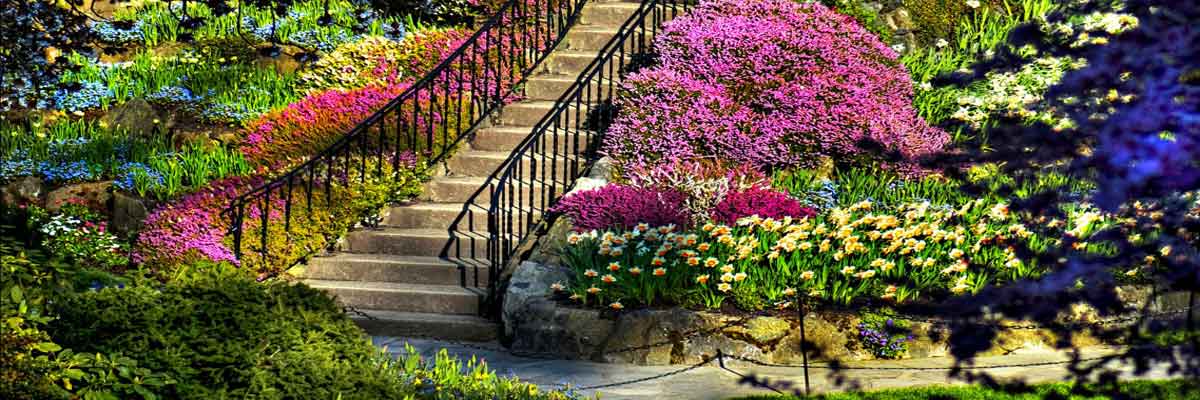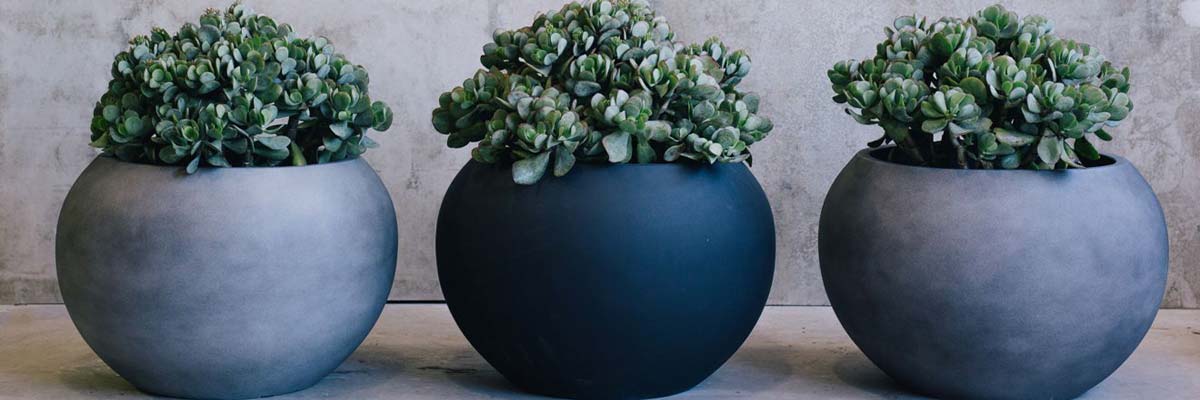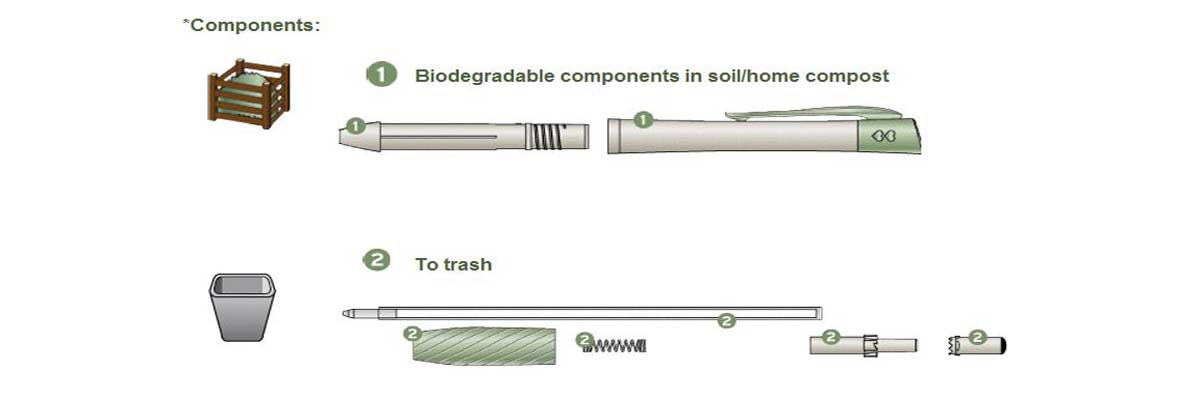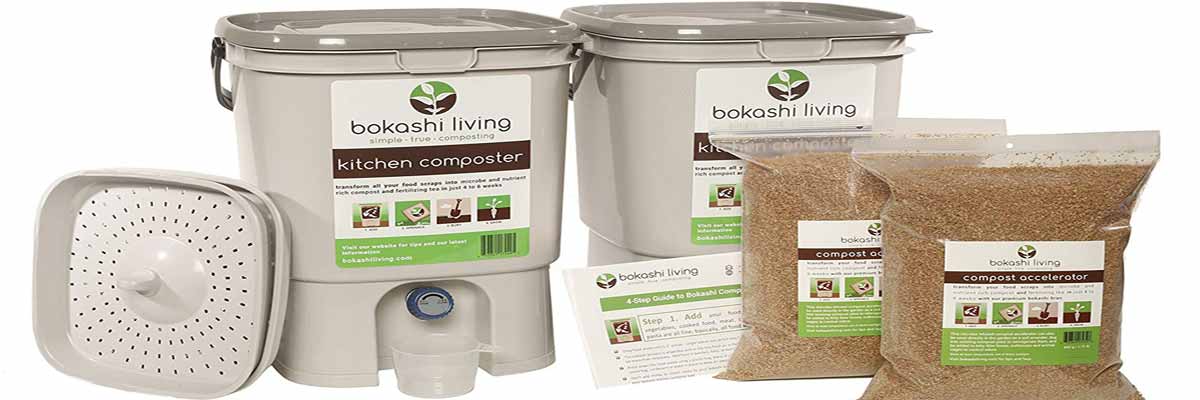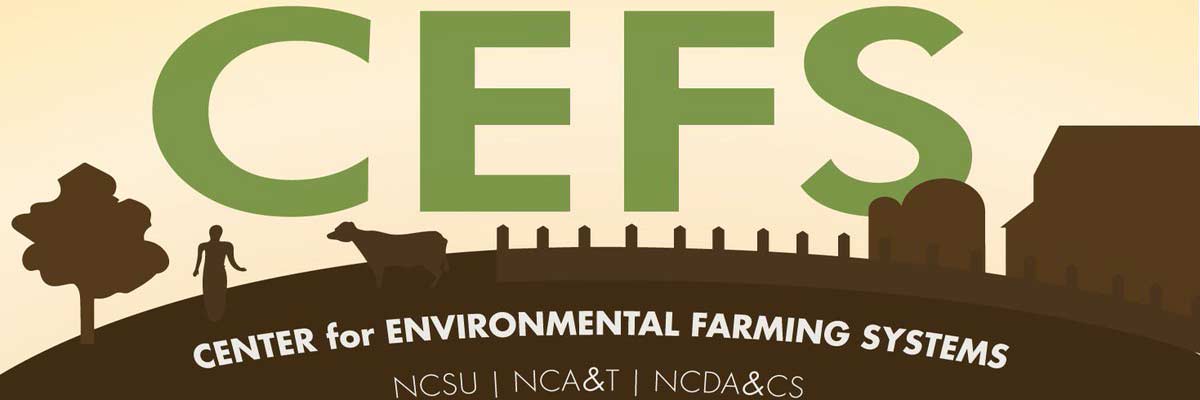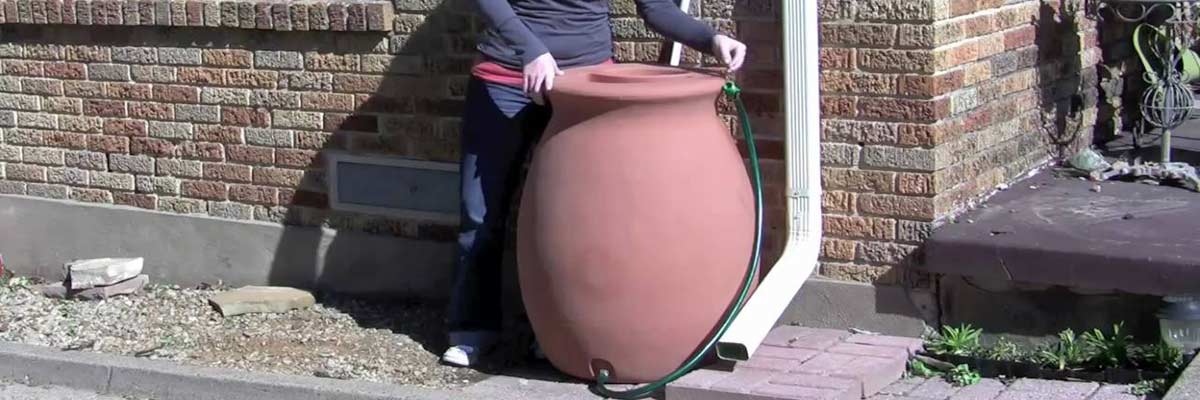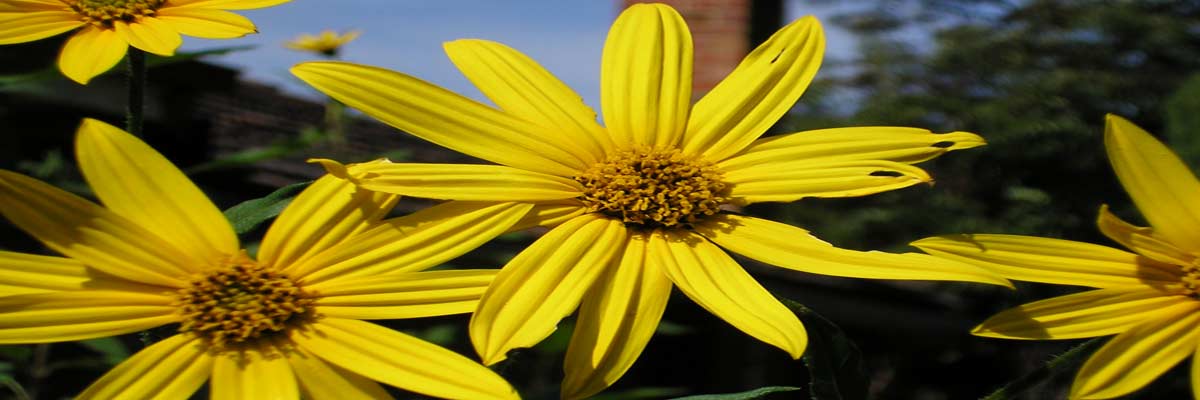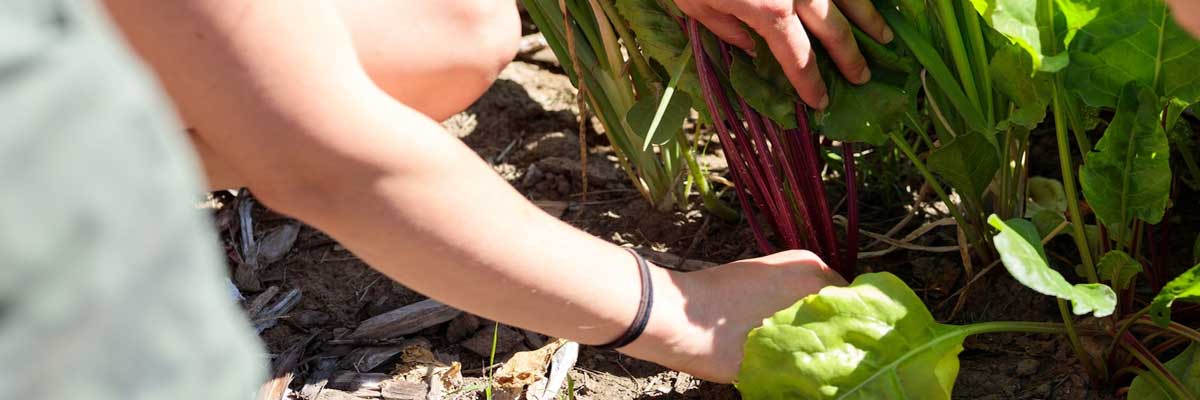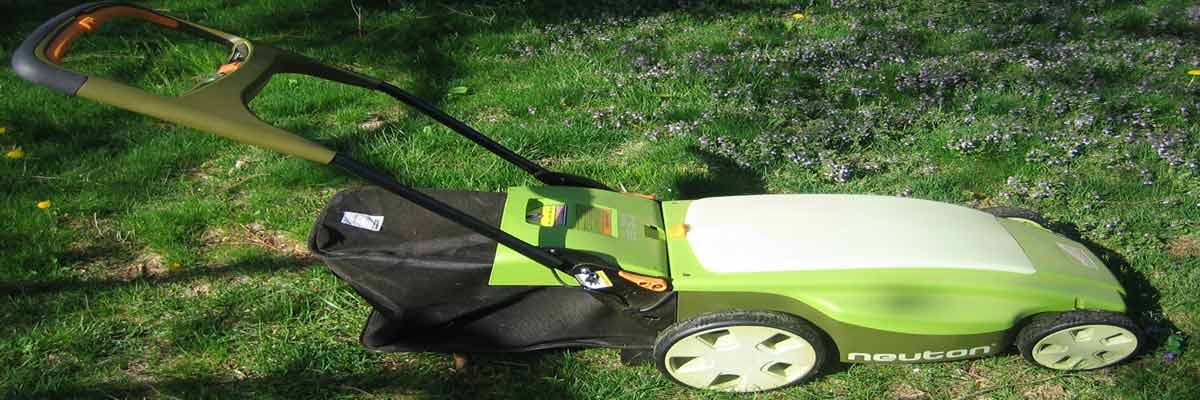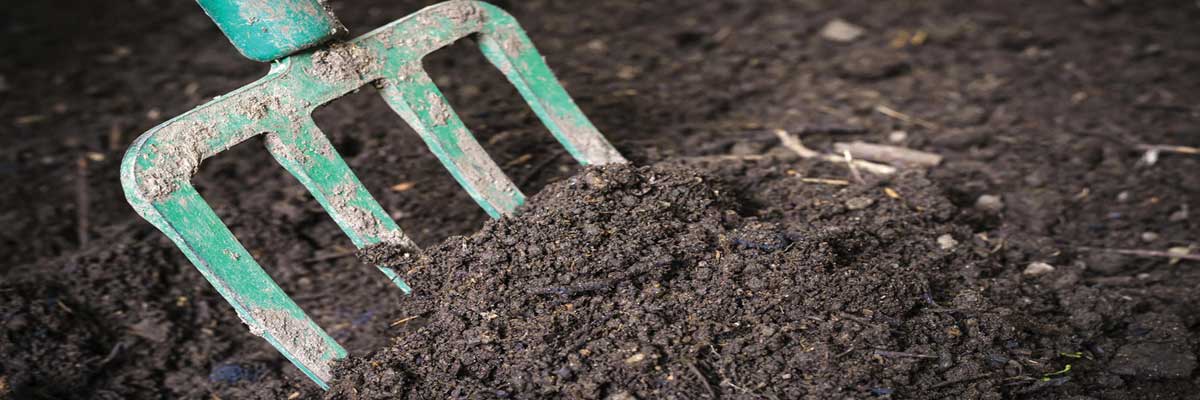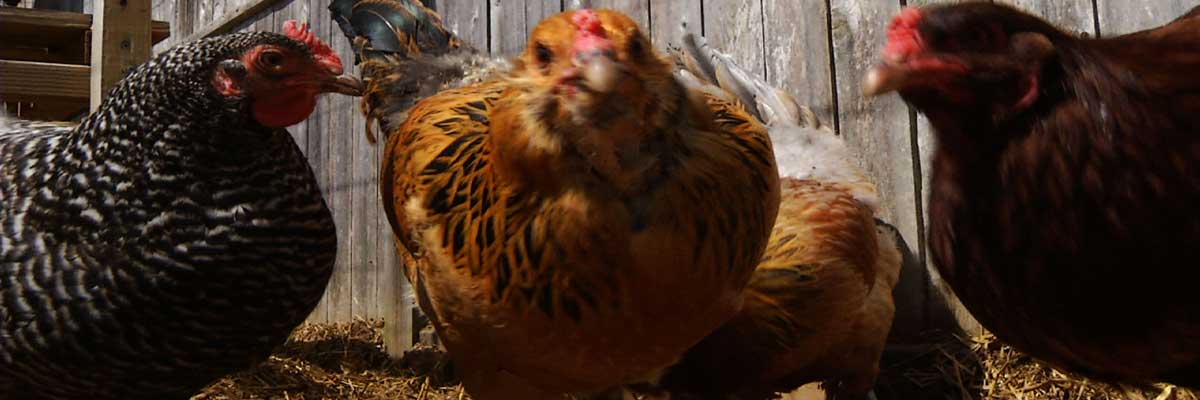7 Ways Homeowners Can Use Landscaping To Boost Their Green Credentials
Some people might think that by simply having landscaping as the core element of their garden they are doing ‘their bit’ to support green issues and to protect the environment. The simple fact is that many of them will not be. We are not suggesting that they are deliberately setting out to increase their carbon footprint and to pollute the environment, but rather that merely having landscaping is not enough in itself.
In fact, there are some types of landscaping and some features that homeowners might insist upon being included in their new garden by their landscapers that, rather than helping the environment, do the complete opposite. Simple examples include lighting that is powered directly by the property’s electricity supply, water features that use water directly from the property’s water supply, and also using manufactured gardening products such as synthetic fertiliser.
These three are a minute proportion of the surprisingly large number of ways residents of New South Wales inadvertently and unknowingly make environmental matters worse rather than better. Thankfully, there are plenty of ways that New South Wales’s homeowners CAN use landscaping to boost their green credentials, and to prove that statement, here are seven of them.
4 Advantages of Landscape Design
When your yard is not as functional, beautiful, or practical as you hoped it would be, you’re likely thinking about improvements you can make. Some landscape design ideas you come up with might be an outdoor entertainment area, pathways, and improved lighting.
While these are all grand ideas achievable with the DIY spirit, that doesn’t mean you won’t benefit from expert advice and assistance from someone who makes a living from landscape design.
If you’re unsure about hiring the experts, the following advantages of landscape design may change your mind.
Year-Round Enjoyment
Intreeg Landscapes advises that many homeowners find that they can only use their yard at certain times of the year. The grass might be too muddy in winter, or there is not enough shelter from the elements. You might even struggle with bugs, which means you’re limited to use at certain times of the day.
When you hire someone with experience in landscape design, these can all be considerations. They can create functional spaces that look beautiful year-round while also being usable year-round, as well.
Common Causes Of Landscaped Garden Flooding
There are not many things that cause more despair than looking out and seeing that your beautiful landscaping has been flooded. Whilst water is something that we should cherish, especially as it keeps us alive, it does take on a different persona when it is responsible for creating what can only be described as a soggy bog in your garden.
According to Sydney based landscapers www.divinelandscapes.com.au we always automatically assume that our landscaped garden gets flooded due to rain falling from above, and whilst that will normally the source, there are others which are below, and not above.
When we say below, what we mean is that there may be poor drainage in and around your garden, and this can occur for reasons that do not become apparent until the first time you have a prolonged spell of rain.
Examples of where flooding in your garden has causes under the ground include a neighbours drainage system diverting water to your garden, building work close by, normally in neighbours, causing water to be diverted, or it could be that the water table under your garden is simply too high.
Others causes can be that your property, including your garden, is built on ground which contains water-retentive clay, is built at a level lower than your neighbours, or is at or near the foot of a hill.
Now unless there has been a burst water main nearby, obviously, the original source of the water will likely be rain. The real problems start when this rainwater is not able to drain properly or is diverted in some way into your garden for the reasons we have cited, and thus causes the flooding in and around your landscaping.
What Is Mulching & Why Is It Important?
Landscape design can be very fun and rewarding, especially if you’ve got a decent-sized outdoor space to work with. There are many different things that landscapers must consider when planning a new garden or outdoor space. These include what sort of plants you’re going to include, where you will plant/install certain things, and how you will keep your garden healthy.
I believe mulching is one of the most important parts of designing and maintaining a healthy garden. Mulching has a huge range of benefits and is generally used to ensure that your plants live in a healthy, sustainable environment.
What Is Mulching?
Mulching refers to the action of placing mulch around the base of your plants. Mulch can be anything from composted organic matter to straw or wood chips. It has a range of functions, including keeping moisture in (See: Are you watering your garden right?), reducing the amount of weeds in an area and providing a slow, consistent flow of nutrients to your plants.
Why Should I Mulch My Garden?
Mulching has a huge range of benefits. In general, it will make your garden look better, will make your plants grow better and will reduce the amount of garden maintenance you need to perform. Some of the more specific benefits of mulching include:
Creating a Self-Sustaining Garden in Australia’s Tough Conditions
Landscape design can be complicated at the best of times. However, it is even more so when Australia’s tough conditions are involved. In many parts of the country, the climate is among the harshest in the world, which means that ‘normal’ landscaping rules don’t apply.
Australian landscaping company Principal Landscapes advise that instead, gardens must be designed with the specific climate conditions in mind, especially if they are to be self-sustaining in any shape or form. There are a lot of pressures to contend with, including poor soils, heat, and low rainfall (in most of the country). This means that you should plan your garden around these things.
Some of the best things that you can do to create a self-sustaining garden in Australia’s tough conditions include:
Use native plants wherever possible:
Australia’s native plants are incredibly diverse, unique, and beautiful. Despite not being used extensively in gardens – particularly in urban environments – they are actually very well suited to sustainable gardening. Our native plants have evolved here to cope with the country’s tough conditions.
Many natives come from extremely dry or arid areas themselves, and are therefore drought resistant and don’t require a lot of water. They won’t suffer if it gets too hot, and in fact, many natives thrive in the heat. A lot of small native shrubs are actually adapted to grow in poor quality soils, which makes them perfect for a sustainable garden – you won’t have to use a lot of synthetic fertilizers.
Use some method of water recycling:
As noted above, the the majority of Australia is very dry. This means that water shortages are common, and it simply isn’t sustainable to use a lot of water on your garden. Obviously, planting drought resistant plants is a good first step, but you can do more. Implementing some water collection system, such as gutters and a small tank to collect rainwater, can help you reduce your environmental impact, while still giving your garden the water it needs.
Sourcing Materials for a Sustainable Fence
Some people don’t consider timber fencing to be sustainable, but much depends on where the timber comes from. Many fencing contractors use pine that is grown especially for such needs, so it could be said to be a sustainable source. However, pine is a softwood; it will need to be painted regularly to keep the water out so it doesn’t rot.
If you are intent of having a timber fence, there are other places to source the timber from apart from what the contractor offers. Here are a few examples.
Old railway sleepers – this is hardwood with still plenty of use in it and is ideal for fences. While hardwood is more difficult to hammer a nail into without drilling it first, it will certainly last for ages and using it saves the waste of it being burned as rubbish, just because it has been replaced by concrete sleepers.
Bridge decking – can be cut up into lengths suitable for a fence and will last for many more years when it doesn’t have to be strong enough to hold the weight of vehicles crossing it.
Piers – any kind of timber that has been used for piers or other used in water is the kind that will not break down easily.
Environmentally Friendly Landscape Design for Seniors
Many older people enjoy gardening and get some much needed exercise as they do it. Unfortunately it often becomes impossible for them to keep on working in the garden due to failing health or just through becoming frailer. However, the right landscape design will ensure that seniors can still potter around in and enjoy their garden without the need for constant digging, weeding or heavy lifting.
Professional landscaping makes use of many different types of components to create a haven of green for anyone to enjoy. While change is never easy, allowing your garden to be changed into one that you can manage for several more years will benefit you and the environment, because many such changes are simply more environmentally friendly.
Low maintenance gardens are all the rage these days as few people have time to spend in the garden anyway. And what time they do have, they’d much prefer to spend relaxing in the garden rather than working in it. One of the major changes would be to remove annuals and replace them with perennials. Annuals are showy, but they don’t last long and require a great deal of work.
You have to replant every season and that means digging, fertilising and watering a great deal more than you like when a senior. It is not environmentally friendly, either; it’s much better to have plants that will last for several years. You can plant them out, add compost and mulch to feed them, keep the soil moist and the weeds away and that is it. Sit back and enjoy.
How Landscape Design Can be Environmentally Friendly
According to Landscaping Sydney, professional landscaping your property can pay dividends, especially if it is done by a professional. Not only will it increase the sales potential and value of your home, if done properly, landscape design can save a great deal on the costs of water, fertilizer and losing plants. How?
A professional can ensure your plants are suited to the area and that they are in a position in the garden that suits them best. Placing shade-lovers in a dry, sunny position and sun lovers in the shade is a recipe for plant loss. And it happens more often than you may imagine simply because we purchase plants that appeal to us in looks, not to suit the garden we have. Choosing the right plants in vital.
Some of us also tend to stick plants in the garden wherever there is a spare space and we don’t think about their watering needs. Some plants will rot away if they get too much water while others thrive on it. Put the two close together and one of them is not going to survive. The same applies when it comes to fertilisers. Some plants prefer one type while other plants don’t like any or not so much.
Australian natives especially, don’t thrive if they have a lot of fertiliser, so if they are planted with anything that is known as a gross feeder – that is, it likes a lot of fertiliser – then one of the two is not going to thrive and indeed, is likely to die off completely.
Landscape design can also be environmentally friendly when the whole property is designed to retain natural rainwater by placing garden beds in a location to catch the run-off, by terracing and by planting water lovers in damp spots. Automated watering systems that have sensors to indicate when watering is needed can save on the use and cost of water.
Designer Garden Pots and the Environment
If garden pots had a pecking order, designer garden pots would be at the top and the humble black plastic ones would be at the bottom. As far as being eco-friendly is concerned, designer pots have it covered, while at the bottom of the list, not much can be said for black plastic except that it is re-usable to a certain extent. That is, it can be repainted and decorated to look much more attractive and to help it last longer.
However, when it comes to designer pots, plastic is not involved as such pots are made from more durable materials such as glazed terracotta which is baked clay, fibreglass and other materials. Some are made from concrete, which is really too heavy, especially if the pot is to go on a balcony or has to be moved around much.
Some designer pots are made from stone, an environmentally good choice, since there seems to be a never-ending supply of stone available. Harvesting stone does not harm the environment because nothing can grow where stone is. Even if it is underground, the roots of many larger plants such as trees will not be able to penetrate it.
Most of the materials that such pots are made from are highly durable; they have to be to survived the natural effects of soil, fertiliser and water that is in them for most of their life. They don’t need to be maintained in any way except for an occasional wipe over with a damp cloth on the outside to keep them clean and shiny. So you could say that such pots are sustainable and certainly friendly to the environment.
Windowfarm Kit The Latest Wonder in Micro Gardening
Like something straight out of scifi, this hydroponic “Windowfarm” kit is the latest solution for urban dwellers looking to grow their own food in a limited space.
It comes to us from a crowd-sourced community of 22,000 windowfarmers around the world; utilizing an approach called R&D-I-Y, or Research & Develop It Yourself. Since 2009, this collective has been working towards perfecting a micro-hydroponic kit that can grow just about any vegetable if you’ve got direct sunlight.
Their latest version has a new design, environmentally-friendly cups and wires, and an awesome reduced price (down from an original $249) of $99. To manufacture the kits, they’ve taken the Kickstarter route and, with 13 days left, have already surpassed their goal of $50,000. If you’re not keen to start your own plants, you can pick up a pack of baby plants for $49, which include 8 varieties like “Genovese Basil, a peppery watercress, perfect-caesar romaine, red leaf lettuce, tangy red-veined sorrel.”
For those that are thinking, “I could make this!” – they’ve got you covered there as well with instructions online for a “Standard 3-bottle Airlift Windowfarm” or a “Hanging 2-Column” variety. Sounds like a pretty decent holiday gift for anyone you know that’s tight on space but keen to grown their own food.
Paper Mate Pens – Now with Less Waste…
Paper Mate sent me a few of their new pens and mechanical pencils to try out in honor of Earth Day. Now while I don’t think that compostable pens are the solution to the world’s problems – I guess I have to give credit to companies for trying to reduce waste and come up with solutions to our overflowing landfills.
The pens work just as well as the normal Paper Mate varieties, I’m a blue ink kind of guy. They’re also very comfortable, but that comes at the expense of a non-compostable grip. The ink hasn’t run out yet, but when it does, I’ll throw it in the bottom of my composter and see what happens. It’s supposed to take a year to break down, but with the generous heat from my food waste-leaves-grass combo, maybe it’ll take less time.
Just don’t forget to break the pen down before composting. There are many non-compostable parts that still need to be removed.
Bokashi Composting: The Urban Solution For Organic Waste?
With Spring so close I can barely stand to wait, I’m making plans for the garden, ordering seeds, and getting ready to reorganize my compost pile. See, during the winter months I’ve been reading up on what an absolutely shitty job I’ve done with my current compost layout. Sure, it’s better than nothing, but I could be getting my food and yard scraps to break down much faster with a bit of proper setup.
Anyways, while continuing this research, I came upon a post over on CleanTechnica discussing the composting technique called Bokashi. Basically, it’s a high-speed breakdown process that takes advantage of anaerobic mirobes. Instead of placing your food scraps in an outdoor, open-air bin — you shove them into an air-tight bin. CleanTechnica gives us the deets:
Building a Sustainable Local Food Economy in North Carolina
The Center for Environmental Farming Systems in North Carolina is pleased to announce that it has been funded to reach out across the state and together with our partners ask: What will it take to build a sustainable local food economy in North Carolina?
From the mountains to the coast, various organizations are promoting and implementing exciting initiatives to support our state and communities through sustainable local agriculture. Examples include new farmer’s markets, local food policy councils, comprehensive county- or region-based food initiatives, farm incubator programs, farm and/or garden youth education programs, health and nutrition projects focused on local sustainable foods, procurement initiatives by large retail and institutional buyers and schools, and much more.
If each North Carolinian spent 25 cents/day on local food (just 2.5 percent of the $3600.00 that we spend on average on food consumption per year), it would mean $792 million for the state’s economy. That money circulates here in the state so has a multiplier effect, rather than going to a corporate headquarters in another state.
Review: The Beautiful And Functional Cascata Rain Barrel
I’ve always wanted a rain barrel. In fact, back in June,I wrote a post declaring as much and announcing my quest to pick something up that was both eye pleasing and practical. Living in Ithaca, NY, I don’t have many problems with drought — but watching all that water roll off my roof, I figured it was a waste to simply see it hit my lawn and disappear. Besides, why pay that much more for municipal water for my garden when I could capture that which fell from the sky?
I’ll admit that writing about water issues in the southwest U.S. and visiting friends in Arizona also made me curious why water conservation tactics (like rain barrels) weren’t used more. Was it because they’re still relatively unknown? Were they a pain to setup and use? I was curious and therefore wanted one. Thankfully, the folks at Garden Supermart heard my cry and hooked me up with one of their Cascata Rain Barrels. After playing around with it (I use that term loosely) for two weeks, I can sum up my reaction in one sentence: Everyone should have one.
Perhaps a New Favorite Garden Toy
OK, most of you are probably thinking I’m going to talk about a tool, but actually I wanted to mention Jerusalem Artichokes aka Sunchokes.
I planted some of these this year for the first time ever, and I’m impressed with them. They grew fantastic, made nice flowers on the top, provided a huge amount of food to the chickens and in the end, gave me the tubers you see below. This bowl is full from half of the section I planted. I created a bed on the south side of my compost pile that is between 3 and 4 ft long. I planted the Sunchokes in double rows within that bed. I didn’t amend the soil or anything. I just dug a trench, put in the tubers and filled it back.
The Green Picture: Before-The-First-Frost Harvest
About 45 minutes ago, we all piled into the garden after hearing that Ithaca, NY would be receiving its first “hard” frost of the season with a low of 29 degrees. Time to harvest the last remaining fruits of the garden! Gourds, lavendar, rosemary, green peppers, cayennes, eggplants, tomatoes — whatever we could find, we cut and dragged in. I even grabbed the Jatropha (more on that later!) and propped it up in the living room. Here is one of our tables of yumminess. Needless to say, we have a bunch of freezing, canning, and eating to do over the next week!
How did your garden turn out this year?
The Neuton Electric Lawn Mower Kicks Some Serious Grass
UPDATE: Ecorazzi is now giving away a Neuton in celebration of their two year anniversary. One person will be chosen at random.]
Before I start this review, you should know that I have a love/hate relationship with lawns. Living in the Northeast, they’re a necessary evil when one has not yet shifted an entire backyard to something built on permaculture. On the other hand, a recently cut lawn does look beautiful and sharp — something drilled into my head from summers of mowing other lawns to make cash in High School.
When my lawn turns colors from a lack of rain, I do not get out the sprinkler. I consider it a vacation from the weekly chore of mowing. If weeds or other variants of grass make their presence known, I consider them compliments to the scenery. It amuses/depresses me to no end the amount of resources Americans spend on the upkeep of lawns across the US — especially in places where grass has no business growing in the first place.
Eleven Year-Old’s Organic Veggie Stand Shut Down by California Mayor
I think that Joel Satalin can add another chapter to his book Everything I Want To Do Is Illegal after reading this story. I mean, really, a child’s veggie stand shut down for lack of permits? What’s next, no lemonade stands or car wash fundraisers?
ABC News via ABA Journal:
Call it a rite of passage: children by the roadside peddling their homemade goodies to adults who are more than eager to drop a few cents into a makeshift cashbox.
But Katie and Sabrina Lewis’ veggie stand, in the town of Clayton, Calif., where they sold homegrown watermelons for $1, has been shuttered by town officials who told the girls’ parents that their daughters’ venture violated local zoning ordinances.
“I think that they’re wrong,” dad Mike Lewis said of the town officials. “Kids should be able to be kids.”
Composting Organic Materials in a City
In my city our local waste management group picks up big plastic containers (which I call a Yardy) of yard waste material. This can be branches, leaves, grass clippings, etc. (Unbeknownst to my neighbors, I also pick up yard materials from their yardies, but that’s a different story…) Participation in this program is great, and it keeps all this material out of the land fill. The city mixes all this material together and turns it into compost which they then sell in 40 lb bags, or give away for free for personal use, if you have a truck to load it in. Paper products and kitchen waste can be recycled in our yardies, although almost no one knows that and it never seems to be highlighted.
San Francisco does a similar thing, although this Time article just mentions kitchen waste so I’m not sure about yard waste. I’m sure there are plenty of other cities that also do similar things.
Raising Chickens on an Urban Homestead
Hello! Welcome to the first of many installments in my adventure of chicken raising. I recently just introduced 2 chickens to my urban palace and I thought it would be interesting to follow along with my trials and tribulations. Hopefully if I make mistakes it will help you avoid them if you decide to embark on this sort of thing on your own.
I was helped along in my chicken adventures by talking with many other chicken owners about what they’ve done, as well as the great website City Chicken. I read two great books which I would recommend, Chicken Tractor by Andy Lee and Storey’s Guide to Raising Chickens. I thought both of these books were great, and while I didn’t think one book covered all the information I wanted, together they did cover a lot of what I was concerned about.
Let me say, I wasn’t born on a farm or really around animals. We had a cat and a dog at various times when I was growing up, but we didn’t have a steady menagerie of animals at my house. What I’ve learned has been from reading books and talking to others. I guess I tell you this to encourage you. Just because you don’t have the background in raising animals doesn’t mean you can’t do it. I’m just at the beginning of my adventure, as I write this, and I’m still nervous and scared as heck. Especially when they sort of dart around. It freaks me out, but I know there is plenty of information and help online and with people I know. I hope Groovy Green can be a resource for you if you are starting out on an eggcellent adventure!

